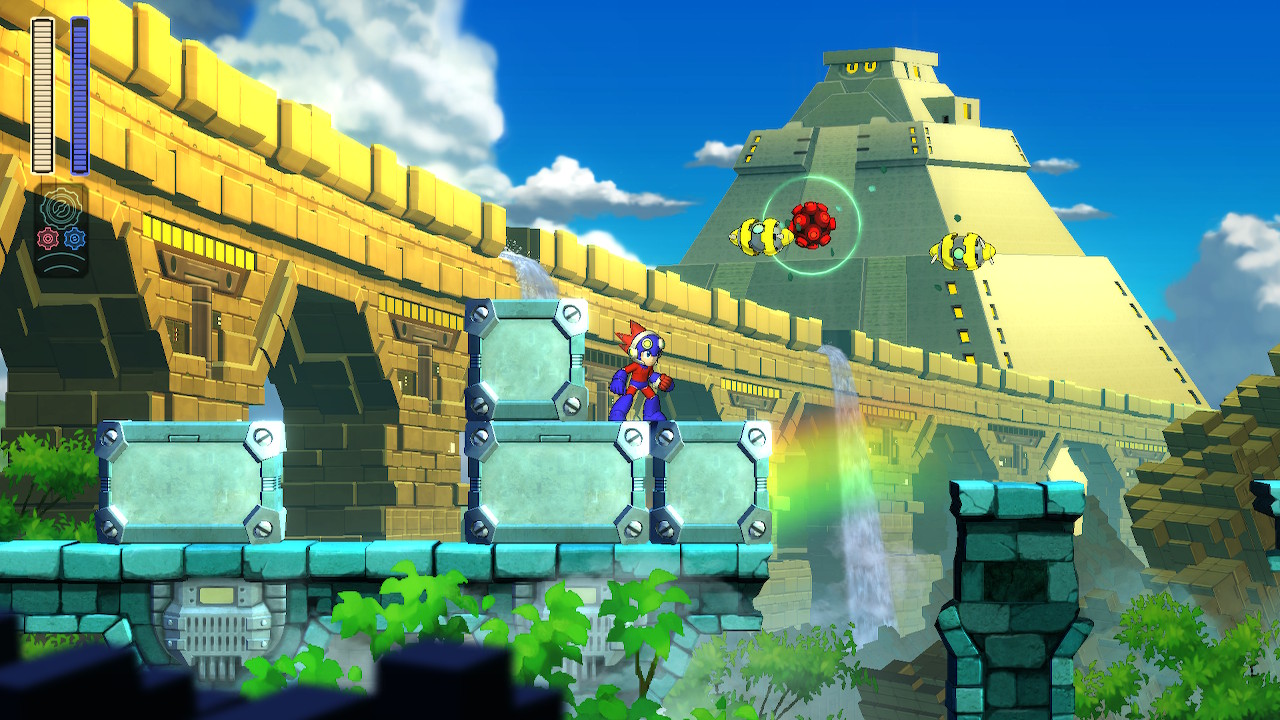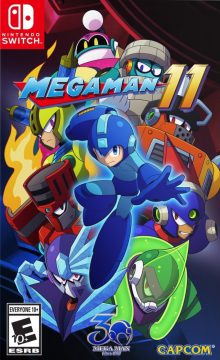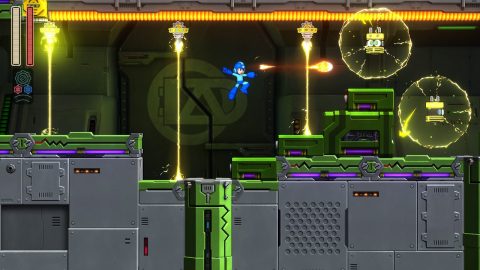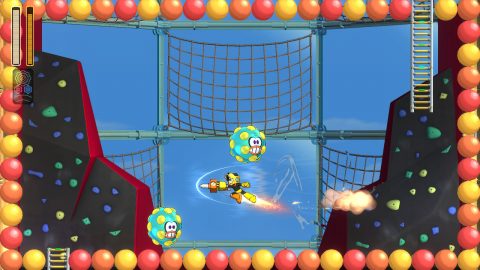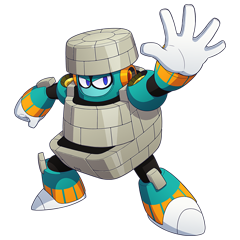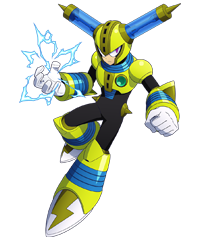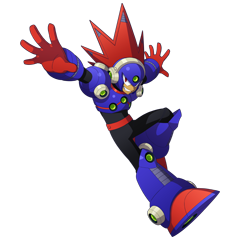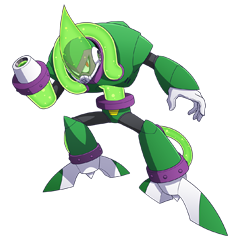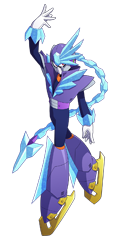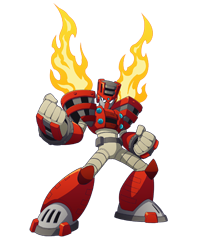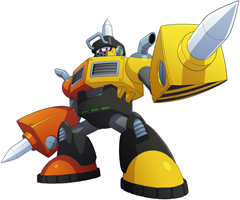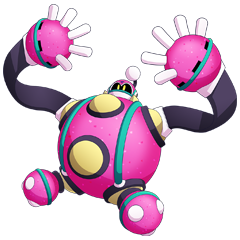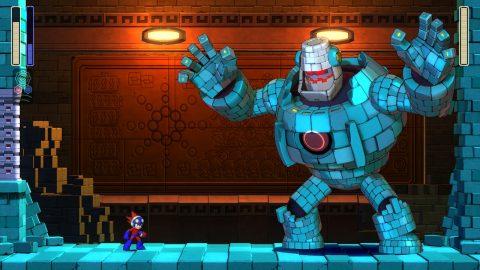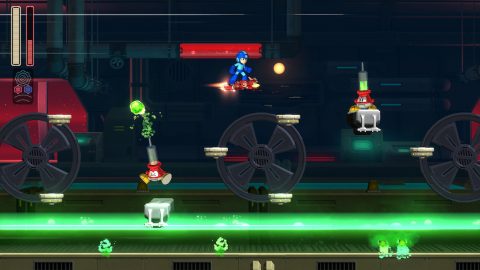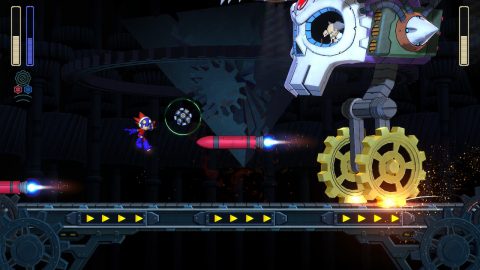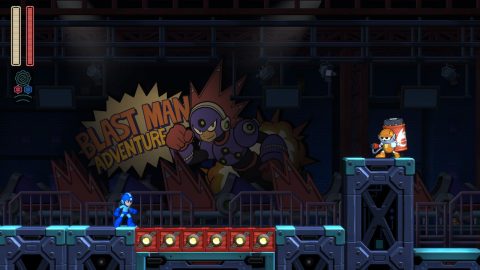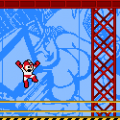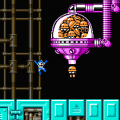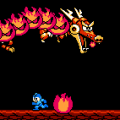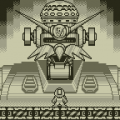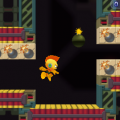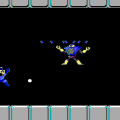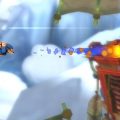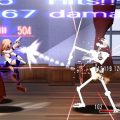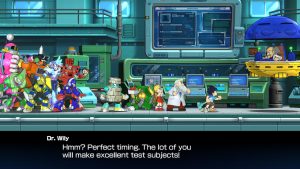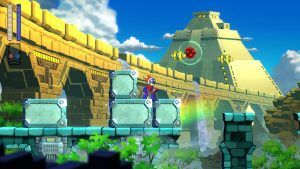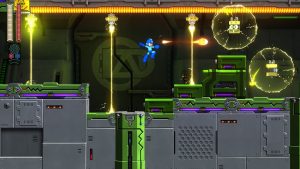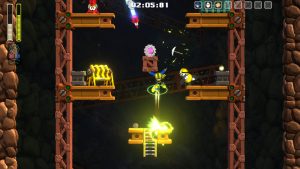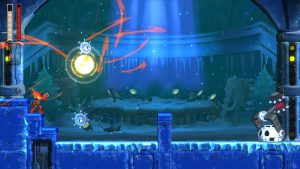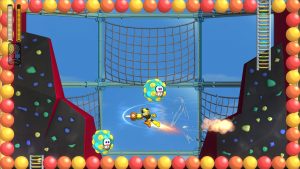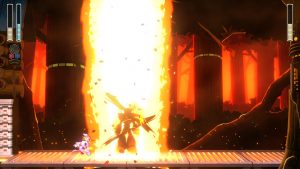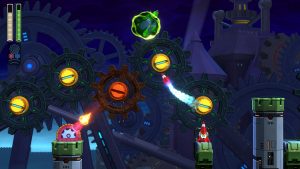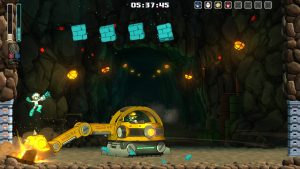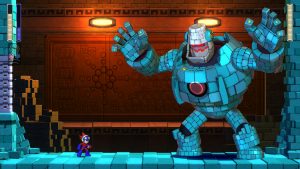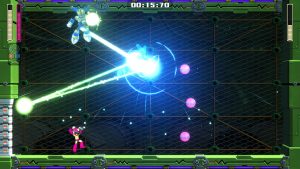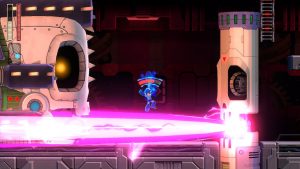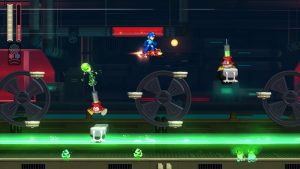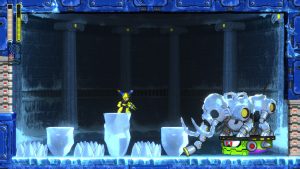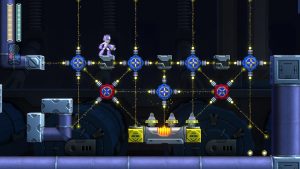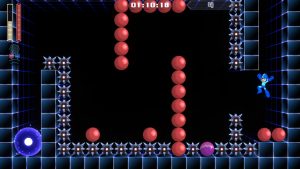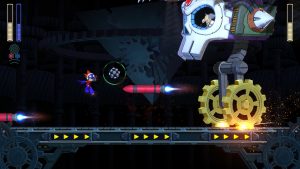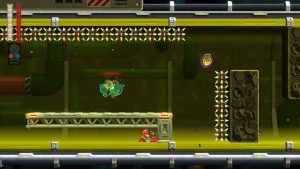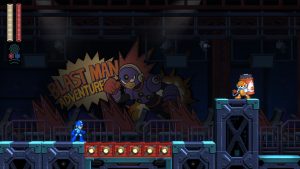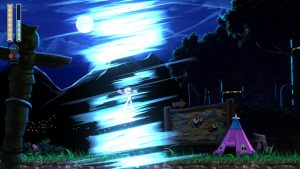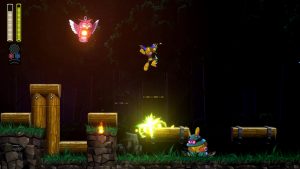- Mega Man (Series Introduction)
- Mega Man
- Mega Man 2
- Mega Man 3
- Mega Man 4
- Mega Man 5
- Mega Man 6
- Mega Man 7
- Mega Man 8
- Mega Man & Bass
- Mega Man 9
- Mega Man 10
- Mega Man 11
- Mega Man: Dr. Wily’s Revenge
- Mega Man II (Game Boy)
- Mega Man III (Game Boy)
- Mega Man IV (Game Boy)
- Mega Man V (Game Boy)
- Mega Man: The Wily Wars
- Mega Man (Game Gear)
- Rockman Complete Works
- Mega Man Anniversary Collection
- Mega Man 3 (DOS)
- Mega Man (DOS)
- Mega Man: Powered Up
- Super Adventure Rockman
- Wily & Right no RockBoard: That’s Paradise
- Mega Man Soccer
- Mega Man: The Power Battle
- Mega Man 2: The Power Fighters
- Rockman: Battle & Fighters
- Mega Man Battle & Chase
- Street Fighter x Mega Man
- Mega Man Tiger LCD Games
- Rockman & Forte (WonderSwan)
- Rockman’s IQ Challenge/Rockman Gold Empire/Rockman Strategy
- Mega Man Mobile Games / Panic Shot! Rockman
- Mega Man Unreleased Games
The departure of Keiji Inafune from Capcom left multiple franchises under his watch floating in limbo. Most striking was the dearth of new releases of his most cherished adopted baby blue boy since 2010. Aside from compilations, Mega Man was threatened to be doomed to the most dreaded of video game retirements, one relegated to mobile gacha cameos, pachinko machines, and rhythm game remixes (a fate befallen Mega Man of all three of these sins, but enough of that digression). Concern was palatable internally within Capcom as well; a cauldron of anxiety coupled with Japanese business’ sense of honor and respect made donning the helm of heading the Blue Bomber post-Inafune a pensive scenario. To show hesitance in wake of the questionable paths Lost Planet and Dead Rising within the last decade took speaks of how high of a pedestal Mega Man is placed in the company. There is a discipline to the jumping and shooting, one that even the former producer for the series can fail to grasp in his own ventures.
The shoes to filled were taken up by veterans of Capcom. Koji Oda, who worked on various Resident Evil titles, became the game director, while Kazuhiro Tsuchiya served as producer. This isn’t the first Mega Man Tsuchiya has developed, as he was a programmer for the 7th in the Classic series. Masakazu Eguchi would also lend his services, having handled many hats among spin-offs such as Battle Network, Legends, and Star Force prior. Together using Capcom’s MT Framework engine, the team tested recreating stages of past Mega Man titles to tinker with the aesthetics and flow to replicate the look and feel in the modern day. After all, the push for the newest game came from the great reception of the first Legacy Collection, so getting that authentic mega-mojo was essential. Unlike his silver anniversary, Mega Man wasn’t going to celebrate with a mere free fan game. 30 years after his debut, Mega Man was announced to be back in his blue tights.
The gear motif is heavy in Mega Man 11. A flashback to Dr. Light and Dr. Wily back in their university days together tells of one of if not the sole crossing point that fated villainous turn for the latter. Under committee verdict, research was given to Light to pursue building towards robots achieving independence over Wily’s drive to push robots beyond the limits of humanity. As a convenience to the gameplay, Dr. Wily recalls his prototype design for his Double Gear system, installing the upgrade into his UFO and into eight Robot Master coming in for a tune-up at Light’s Lab. To fight fire with fire, Rock boldly agrees to have the Double Gears placed inside for teach the latest lesson to the evil doctor.
Likewise, the Double Gear system is the newest twist in play for 11. Unlike the retro throwbacks of the last two games, Mega Man is outfitted with his slide and Mega Buster in the same manner last seen in MM5. As in the name, the Double Gears are twofold: one boosting power and the other speed. With the Power Gear, Mega Man’s lemony P-shooter shots are transformed into charge shots, along with gaining additional firepower in his special weaponry not unlike the armor enhancements given to X in his series. The Speed Gear effectively grants bullet time to the Blue Bomber, allowing helpful slowdown to evade swift projectiles or precision timing. Both gears can be turned on at once, but at a heavy burden. These overdrives don’t come without a cost, as overheating Mega Man hampers his abilities until a suitable cooldown if pushed too far. Either gear on its own can be switched on and off at the fly so as not to go over the gauge Excitebike style, but switching on both cannot be canceled out. In essence, going Double Gear is a last-ditch effort when Mega Man needs those precious final seconds to take down a tough foe before death. A risky gamble, but one that might be required as every boss isn’t shy about shifting into one of the Gears in battle.
The design of the levels sticks to the tried-and-true formula patented in the decades of classic releases. Despite the multitude of tech compared to the NES days, the blocky layouts of each stage doesn’t stray from the originals, nor do they break conventions of teaching a vital element first in a safer environment before expanding and compounding on the hazards later in the level. Neither is there a moment of overloading the screen with a plethora of enemies or shift in the camera for a 2.5 exclusive stance. In fact, any intrepid fan 8-bit demake could construct Mega Man 11 to fall in line as 9 or 10 without any loss. That isn’t to say the team didn’t make use of modern hardware. The cel-shading makes for a simple but iconic pop effect to the look of Mega Man and all the enemies and stage elements. The subtler stock of animations conferred leads to cues for weak points and telegraphs for attacks, along with minor touches such as Pickmen switching hands to wield their pickaxes whenever they turn side to side. Backgrounds were granted a significant bolstering, barely recycling props in order to add unique backdrops per screen, sneaking in the occasional Easter egg along the way. Even the warm glow of an oncoming screen transition to an oncoming fiery obstacle course helps aid a warning of the ensuing gauntlet. Of course, the Robot Masters and other bosses mini and major get to shine in ways with the latest generational tricks that go beyond the limits of the lesser-bit past consoles. Not even on PSP did a boss transform into a hulking monstrosity out of desperation.
Speaking of, about that octadic array:
DWN-081 Block Man
The little stonewrought construction bot with a chip on his shoulder. While he tends to lay buildings and drink oil along his buddy Impact Man, Block Man aspires to erect mighty pyramids and temples like in ancient times. His Block Dropper summons a string of bricks from on high, but he shifts into a colossal golem when in danger. Block Man even had his weakness altered compared to the demo of the game. [Weakness: Chain Blast; originally Pile Driver]
DWN-082 Fuse Man
An inspector of electrical transformers. This speedy no-nonsense worker cannot afford to blow his top. While he himself tends not to be grounded, his Scramble Thunder does shock across the floor, along with being able to be fired upwards. Oddly, Fuse Man has a pet rabbit he calls “Watt”. [Weakness: Bounce Ball]
DWN-083 Blast Man
Built for pyrotechnics, Blast Man does a banging job making booming effects for movies and stunt shows at theme parks. A shame that he turned Flower Land park into his own little egotistical blockbuster. Then again, he has a perchance for the theatrical even before becoming a mad bomber. That and being a bit of a hothead of an op-ed journalist. With his Chain Blast, up to 4 floating bombs can be detonated in a controlled cluster. [Weakness: Blazing Torch]
DWN-084 Acid Man
Surprisingly aquatic chemist turned mad scientist. He might cackle now, but he treats mixing acids as no laughing matter, able to concoct solutions at utmost precision and swims in the broth to test his corrosive cocktails. Acid Barrier is the game’s shield weapon, but is also used to lob globs of that green gunk. [Weakness: Block Dropper]
DWN-085 Tundra Man
The well of cold-related names must be running dry. Built by Cossack Labs apparently, this polar climate landscaper grew obsessed with ice-skating after watching performances on TV. A show-off to the bitter end, an audience of only arctic fauna does not a renowned profession make. Oh well, the pursuit of the arts is a personal one. When not making mere dazzling spins in the air, he can whip up cyclonic Tundra Storms as easy as pirouettes on ice. [Weakness: Scramble Thunder]
DWN-086 Torch Man
Not to be confused with the DOS boss of the same name, this “Torch-jutsu” martial artist scout camp fire marshal (a profession combo only available in 20XX, obviously) tries to ironically keep his cool through his training. Being able to punch out fireballs and deliver flaming kicks is his own self-taught Torchkaenken techniques, but Mega Man can harness a diagonally launching Blazing Torch in victory spoils. [Weakness: Tundra Storm]
DWN-087 Impact Man / Pile Man
A Super Robot/Tokusatsu fusion of a brother pile driver trio. Combined, they become a stubborn headstrong Robot Master that hammers through the toughest tasks. Like his friend Block Man, Impact Man too can power up into a giant to really pile on the pain. Curiously, the Impact Brothers unfused serve as a stage obstacle throughout segments of his level. His Pile Driver launches him and Mega Man forward for a devastating strike. [Weakness: Acid Barrier]
DWN-088 Bounce Man / Rubber Man
Able to withstand the crushing work as a crash test dummy, Bounce Man became a fitness instructor at Boing-Boing Park, an indoor half-rock-climbing, half-trampoline “Hopxercise”, all-ball pit playground facility. His bubbly personality makes for a nice stress ball to pop to vent the player’s irritation. He is his own weapon, with stretchy arms and kinetically ricocheting around walls. Mega Man makes do firing his own set of little squeaky Bounce Balls. [Weakness: Pile Driver]
An interesting wrinkle in Mega Man 11 is that there are now 4 levels of difficulty to select for each new game began. Even curiouser is that Normal mode if the 3rd hardest available, with Casual and Newcomer filling the easiest and 2nd easiest respectively with Superhero as the hardest. Take this as a sign of Normal pulling no punches in typical tough-but-fair fashion. Mega Man falls from only a handful of hits, instant death lurks around many corners, and bosses will humble you if you fail to follow their strict patterns, but all of it is telegraphed and never comes off at cheap. Well, aside from a scant amount of wide open pits many screens down vertical drops in Impact Man’s stage. Those coming off from Mega Man 10’s distinctive difficulty levels will find the changes highly anemic. No changes are given for enemy attack patterns nor their speed. Bottomless pits stay open, as well. Rather, Capcom went the easier route of simply changing damage outputs, length of gear meter, offering freebie Beat saves from pits, and, in the case of the harder Superhero mode, removing health and energy pickups altogether. As a counterpoint, knowing the exact weakness for each enemy can make encounters a robo-cakewalk, only at the expense of careful weapon energy management. If all else, a trip to Light’s Lab with bolts in hand can offer a wide array of enhancements for Mega Man, with more unlocking with subsequent victories and defeats. With enough tenacity, even the return of the mighty Yellow Devil can be bested chugging down 9 E-Tanks and defense boosts at the cost of time and possibly pride.
Speaking of weapons, 11’s arsenal stays practical if pragmatic. Going by the original intent of the power-ups back from the first game’s planning, Mega Man’s suit and cannons change shape as well as color to distinct designs mirroring the boss they were earned, thanks to the shift to using 3D models. Each weapon serves as a tool, logical methods of takedowns and screen clearing in their own right, including fitting immunities to complete the rock-paper-scissors mentality to each grade of offense. Many special weapons come off as remixes and retreads of earlier types though, with Block Dropper being the sole standout and twist on a hard-hitting stone throw by sky-falling bricks raining down. The Power Gear too adds more firepower to each strike, though drains more energy than usual. Weapon selection has also been refined, bringing back the L/R button switching along with adding an optional 2nd analog stick quick menu. Rush is relegated to his own 2 buttons for instant access; Mega Man doesn’t even turn red summoning his companion to spring up or fly anymore, either. Be forewarned, Rush Jet eats through energy like crazy. It’s not all perfect; Acid Barrier needs to pull up a shield first before any firing of the weapon can be used, and the game doesn’t teach the manual detonation of Chain Blast’s bombs clear enough– while also having the drawback of possibly clinging to obstacles the player might not wish to have attacked. Nevertheless, the selection is more than serviceable and open to utilities and speedrunning techniques.
As far as pacing and overall structure goes, the game itself has a sense of the later Game Boy Mega Man titles. This is both a blessing and a curse, as the solid portable titles weren’t without their stumble blocks. One of the major issues falls into stage fatigue. After a multitude of checkpoints and gimmick retreads, coupled with the low amount of life tries per run, it grows tiresome to run through a long level, only to die before the end or at the boss and start all the way back. That and the more play-it-safe side of things keeps 11 from truly exceeding expectations. Many enemies on offer are direct rips from other classic titles with only a few kinks added. The final lap through Wily’s latest cog-clogged fortress ends almost in abruptly as it was getting into the swing of things after the return of a duo of seen-them-before bosses. Factoring in that the game has the same number of stages as the last 2 integer sequels, many double the length as before, the game still comes off rather short. A lot of this also is in due part to the small cast, as Proto Man and Bass are completely absent after being large roles in the latter half of the series. Oddly, 11 carries the torch of being as script heavy for its length as Mega Man V on Game Boy. Nowhere is this more evident than the midway point cutscene with Dr. Light spilling out his long lamentation for that eventful day back at the university only to end with “Oh yeah, here’s Rush Jet”. As an aside, this is the most action and relevance Auto has been included in the series since his debut in 7.
For a budget title, the presentation is clean and vibrant. As stated before, the game doesn’t go out of its way to be fancy with modern systems, which gives the benefit for a smooth 60 FPS experience no matter the console of choice. The focus was kept to make sure every foreground element popped with only some subtle lighting and glow effects and use of color & shading to assist in revealing important info to the player and adding to the satisfying kabooms of a destroyed foe. A majority of the cutscenes play out in-game, having the characters with a handful of animations to convey their mood and situation, though unlike Mighty No. 9, characters’ mouths do move during speech. The intro and snippets of backstory are presented with crisp illustrations, portraying both the good and bad doctors’ younger selves for the first time. The proportions of the characters also stay more in line with the classics. Unlike the last polygonal O.G. Mega Man title, Powered Up, there’s no cutesy bobble-head look, and Capcom forewent adding too much detail to take away or “modernize” the game too much. To take Mega Man’s suit, there’s only a hint of a few stitch lines and faint accents to his joints to set his look apart from the earlier installments. Apart from that, a handful of the Robot Masters make use of translucencies and smooth texture work. Oh, and Roll got a new dress. To say that the biggest criticisms to 11 are nitpicks to tradition is for the best. (Though to be fair, why remove the “leap through boss doors” transitions? And no Wily eyebrow raising? C’mon!)
Marika Suzuki composes a score that certainly sets the mood for each level, though might lack some of the catchy melodies of the NES soundtracks– a stiff comparison for many a game, actually. The energetic techno/dance tunes rarely lose that four-on-the-floor rhythm. Sadly, there’s only one Wily Fortress song, a step back from the 16-bit through Inti Creates days giving every step deeper into castle its own flavor. In so far the only DLC on offer (so far) instrumental rearrangements for the 8 Robot Master stages were a pre-order bonus from multiple stores. These “unplugged” variants give a more laid-back groove, bringing some of that masked melodic tracks some time to shine. Impact Man’s breakbeat backing in the normal score gives way for a jazzy piano jam, for example.
Mega Man and pals are vocal once again this round. For a more story-driven affair, the voice acting is commendable, particularly the doctors past and present. This is possibly the first time the English localization was able to adapt Auto comical accent with some wisecrack in his speech. The Robot Masters all come off rather corny in their deliveries, however. The game is dual-language with multiple subtitle options, so it’s simply a preference whether you rather have your 8 main bosses crying out anime antagonist boasts or yucking it up with puns galore.
Bonus content is a tad paltry as of release. Added game modes consist mainly of time attacks or imposed challenge runs such as how little jumps or how few shots can the player make. Other such challenges involve adding collectible icons throughout the stage or popping the correct balloons instead of enemies. The only unique bonus stages involve a Dr. Light Lab training gauntlet consisting of grid blocks. This can all change with future DLC like the last two titles, however. The only console exclusive content is the Switch’s amiibo scanning, though using the newest Mega Man amiibo or his Smash Bros. Figure only summons Eddie for a once-a-day Tank freebie. The game is priced accordingly, though those new to the series might find more bang for their buck buying both Legacy Collections on the same platforms for $10 more. For collectors, various deluxe editions were released, culminating with a massive Complete Edition box set in Japan.
Ultimately, Mega Man 11 is the Rocky Balboa of the series. It doesn’t go to completely change the franchise, but to be proof that the company still has the talent to pull it off. Like both the movie’s titular character, Mega Man had to rise to proclaim that there’s fight in him yet, that the precision of his oeuvre’s clockwork still stands the test of time, regardless of who’s in charge. Now all that’s left is to build from this concept so that future games will prosper and excel in what is possible. The first round of the new generation was solid. Now it’s time to really kick into overdrive.
